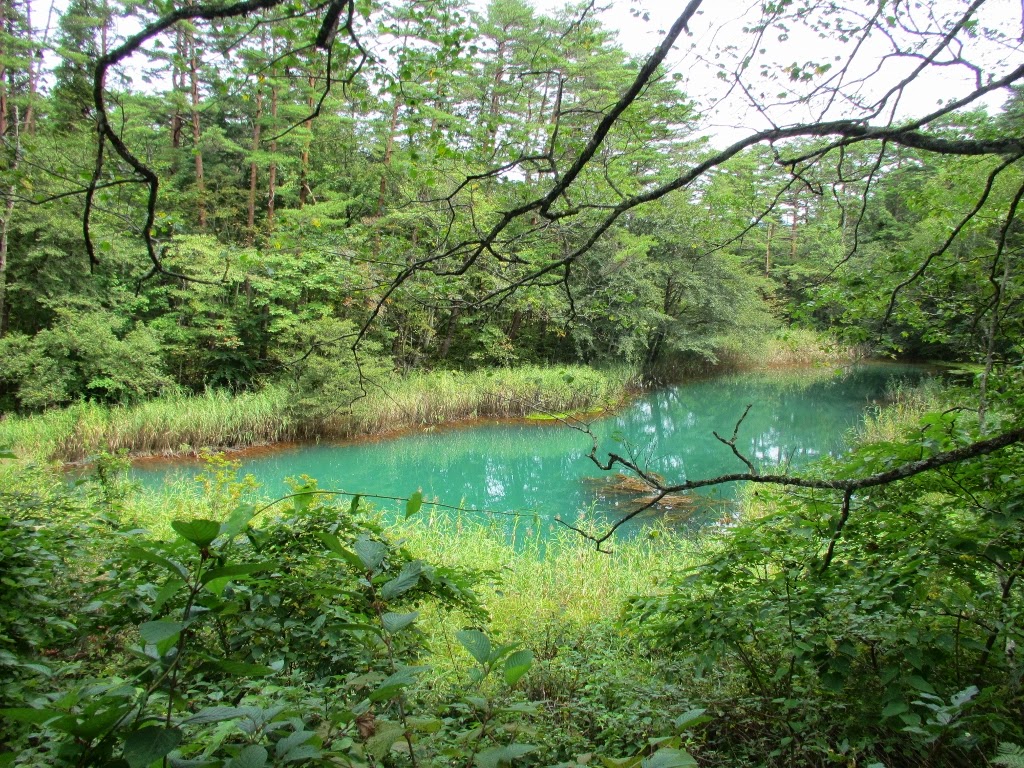目黒雅叙園にある百段階段で行われた「假屋崎省吾の世界」展に行ってきました。
毎秋こちらで開かれていて今年で15年目だそうです。
Shogo Kariyazaki is a famous Ikebana flower artist in Japan.
He is also a popular TV personality.
Every autumn, he exhibits his artwork at Hyakudan-kaidan in Meguro Gajoen.
This year, it was held between October 1-26.
百段階段というのは1930年代に作られた雅叙園に残る唯一の木造建築。
百段といいながら実は99段。
奇数のほうが縁起がいいということらしいです。
Hyakudan-kaidan is a very unique place built in the 1930s. "Hyakudan-kaidan" means "100 steps" but actually, there are 99 steps. (A lady explained that it was because odd number was considered luckier than even number.)
この階段の右側に7つのお座敷が並んでいます。
それぞれを高名な画家や彫刻家などが手がけ、贅を尽くしたまさに芸術品のようなお部屋です。
それぞれを高名な画家や彫刻家などが手がけ、贅を尽くしたまさに芸術品のようなお部屋です。
Along these steps are seven Japanese style banquet rooms.
Each of them is unique and super-gorgeous!
Highly-reputed artists and craftsmen of the time worked on each room.
Each of them is unique and super-gorgeous!
Highly-reputed artists and craftsmen of the time worked on each room.
ところで、ここ百段階段は通常は一般公開されていません。
予約制の見学ツアーか、あるいはこのような展示会で見られるのみ。
しかも通常は写真撮影禁止。
今回初めての試みとして、トワイライト入場者のみ写真撮影が許されました。
すごいラッキーだったみたいで嬉しい!\(^o^)/
(假屋崎さんありがとうございます!!)
By the way, this place is usually closed to the public.
Either you have to take a guided tour (with reservation in advance), or you have to go to one of these exhibitions.
Even then, photography is prohibited.
For the first time, evening (yes, only evening) visitors to this exhibition were permitted to take photos.
So, this was a very rare opportunity! \(^o^)/
一番すごかったのは漁樵(ぎょしょう)の間。
My favorite room was Gyosho-no-Ma.
My favorite room was Gyosho-no-Ma.
すごい彫刻で埋め尽くされた室内とそれに負けない假屋崎さんの作品
astonishing woodcarving works and great flower arrangement
astonishing woodcarving works and great flower arrangement
着物や帯も假屋崎さんのデザインだそうです。
kimono and obi are also designed by Shogo Kariyazaki
kimono and obi are also designed by Shogo Kariyazaki
天井も彫刻です。 Flowers on the ceiling are also wood carved.
清方の間も素敵でした。
すべての作品が鏑木清方(1878-1972)の筆によるものです。
I also liked the room, Kiyokata-no-Ma.
すべての作品が鏑木清方(1878-1972)の筆によるものです。
I also liked the room, Kiyokata-no-Ma.
Every work in this room was by Kaburaki Kiyokata (1878-1972).
Tokonoma in the first room
二つ目の部屋は假屋崎さんの作品で埋め尽くされています。ゴージャスでした。
This great work occupies the entire second room.
This great work occupies the entire second room.
障子も素敵です。shoji screens
他の部屋はこんな感じ。
The other rooms were also great.
清水の間 (橋本清水ら) Seisui-no-Ma by Hashimoto Seisui and others
星光の間 (板倉星光) Seiko-no-Ma by Seiko Itakura
草丘の間 (磯部草丘)ハロウィーンに合いますね!
Sokyu-no-Ma by Isobe Sokyu Halloween arrangement matches the room very well!
でも正直言うと、自分で撮った写真を見てちょっとがっかりしています。
実際はもっとずっと素晴らしかったのに。
光や影、音や香り、そういったものすべてが「假屋崎省吾の世界」だったんでしょうね。
来年はぜひいかがですか?
But to tell you the truth, I was disappointed when I saw my photos.
My photos don't show even half of what it was like being there.
Light, shadow, sound and smell...
Together, they make "The World Of Shogo Kariyazaki."
I hope you can experience it yourself next year.
Sokyu-no-Ma by Isobe Sokyu Halloween arrangement matches the room very well!
でも正直言うと、自分で撮った写真を見てちょっとがっかりしています。
実際はもっとずっと素晴らしかったのに。
光や影、音や香り、そういったものすべてが「假屋崎省吾の世界」だったんでしょうね。
来年はぜひいかがですか?
But to tell you the truth, I was disappointed when I saw my photos.
My photos don't show even half of what it was like being there.
Light, shadow, sound and smell...
Together, they make "The World Of Shogo Kariyazaki."
I hope you can experience it yourself next year.
.jpg)
.jpg)
.jpg)
.jpg)
.jpg)
.jpg)
.jpg)
.jpg)
.jpg)
.jpg)
.jpg)
.jpg)
.jpg)
.jpg)
.jpg)
.jpg)
.jpg)
.jpg)
.jpg)
.jpg)
.jpg)
.jpg)
.jpg)
.jpg)

.jpg)
.jpg)
.jpg)
.jpg)
.jpg)
.jpg)
.jpg)
.jpg)
.jpg)
.jpg)


.jpg)

.jpg)
.jpg)
.jpg)
.jpg)
.jpg)
.jpg)
.jpg)
.jpg)
.jpg)